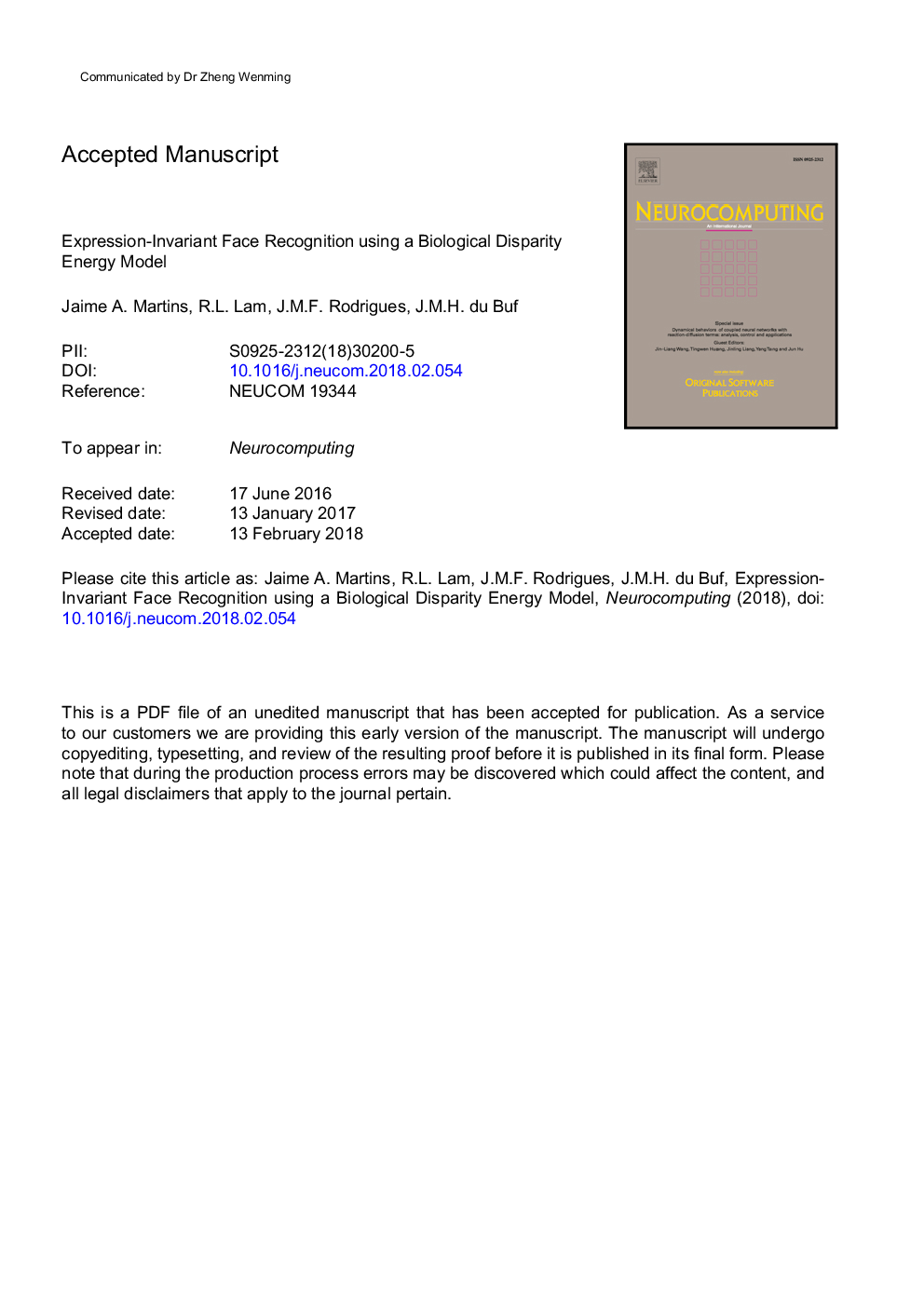| Article ID | Journal | Published Year | Pages | File Type |
|---|---|---|---|---|
| 6863950 | Neurocomputing | 2018 | 18 Pages |
Abstract
Biologically-compatible methods are not commonly used for face recognition. Complex computational approaches are preferred and dominate the state of the art. However, we know that the human brain is very efficient at processing faces, without explicitly depending on advanced mathematics. In this paper we focus on evaluating the performance of an expression-invariant face recognition system, which is based on the most widely-accepted biological model of stereo vision: the Disparity Energy Model (DEM), which has been shown to deliver precise but inaccurate results. We show that the DEM can provide 3D disparity maps which are suitable for both identity recognition and verification, even coping with a wide range of facial expressions. We test disparity information, both alone and in combination with luminance data, achieving state-of-the-art results. We also compare DEM results with those obtained by precise and accurate laser range maps, concluding that the differences in performance are very small.
Keywords
Related Topics
Physical Sciences and Engineering
Computer Science
Artificial Intelligence
Authors
Jaime A. Martins, R.L. Lam, J.M.F. Rodrigues, J.M.H. du Buf,
